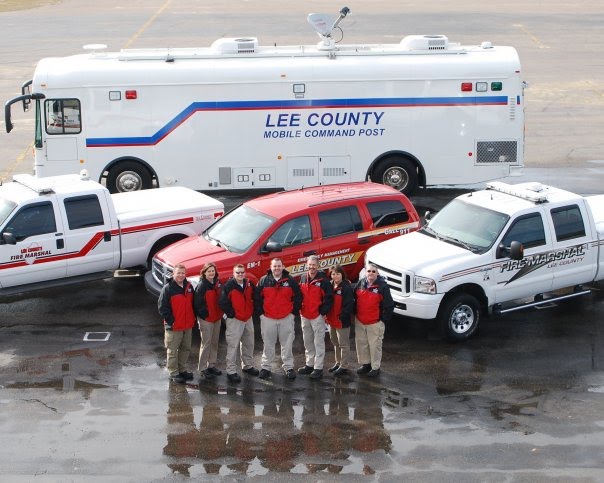Monday, March 1, 2010
SEVERE WEATHER AWARENESS WEEK IN NORTH CAROLINA - SEVERE THUNDERSTORMS
PUBLIC INFORMATION STATEMENT
NATIONAL WEATHER SERVICE RALEIGH NC
800 AM EDT MON MAR 01 2010
*******************************************************************
SEVERE WEATHER AWARENESS WEEK IN NORTH CAROLINA
FEBRUARY 28 - MARCH 06
STATEWIDE TORNADO DRILL 930 AM WEDNESDAY MARCH 3, 2010
*******************************************************************
This week has been declared North Carolina's Severe Weather
Awareness week for 2010.
Today's we will define exactly what is a severe thunderstorm?
Severe Thunderstorms
For the first time since 1954 the National Weather Service has
redefined the hail criteria for severe thunderstorms. The new hail
size criteria classifying a storm as severe is hail 1 inch in
diameter hail or equal to the size of a quarter. For the last 55 years
hail three-quarters of an inch in diameter or penny sized was considered
severe. This means severe thunderstorm warnings will no longer be issued
for hail the size of pennies and nickels. This will result in a
reduction in the number of warnings issued this year. On average
only about 40 percent of all hail reported in central North Carolina
is quarter size or larger. The wind criteria for a severe
thunderstorms...58 mph or greater...remains unchanged.
Over the last five years there have been nearly 5000 reports of
large hail and damaging wind statewide resulting in over thirty two
million dollars in damage. Severe thunderstorms are also responsible
for injuries and even deaths in the state resulting from lightning,
high wind and tornadoes. The severe thunderstorm season in central
North Carolina typically starts in March and does not end until late
in the fall.
In 2009 warnings issued by National Weather Service offices provided
An average of 19 minutes for severe wind and hail, with detection
rate of ninety percent. It is worth noting that the National Weather
Service does not issue warnings for lightning and given the deadly
nature of lightning you should always be aware of the lightning
danger anytime a thunderstorm is nearby. A good rule of thumb to
live by is when thunder roars go indoors.
Large Hail
In the last 5 years severe thunderstorms in North Carolina have
produced hail as large as tennis balls and baseballs across the
piedmont and eastern North Carolina. While hail is not usually life
threatening, these large chunks of ice cause serious damage to
roofs, automobiles, and crops. Hail season in central North Carolina
typically runs from mid March through early July, typically peaking
in May.
Hailstones grow in thunderstorms with strong updrafts. These strong
upward moving currents of air keep the ice suspended inside the
thunderstorm...allowing the chunks of ice or hailstones to grow
larger and larger. Once the hail become too heavy for the updrafts
to keep suspended...they fall to earth as hail. Thunderstorm
updrafts which show signs of rotation on radar are very effective at
suspending hail since the internal velocities in rotating updrafts
are higher that those of non rotating updrafts.
Damaging Wind
Severe gusts of wind from a thunderstorm called downbursts or
straight line wind are a serious danger. Nationally over the last 30
years nearly as many people have been killed by straight winds as
from tornadoes. Thunderstorm gusts rush down from the storms
sometimes reaching speeds in excess of 100 mph. Thunderstorm wind of
this magnitude impact large areas creating widespread damage and
injuries. Damaging straight line winds can cause damage equivalent
to that of a tornado.
Lines of well organized thunderstorms...called squall
lines...occasionally move across central North Carolina in the
spring and early summer. These dangerous storm systems can be very
explosive racing across the state at over 50 mph creating widespread
wind damage over entire counties.
Damaging wind events in central North Carolina typically start as
early as mid march and run into august. Damaging thunderstorm wind
events are most notable from may through early August which is much
longer than the typical severe hail season.
Safety
You can protect yourself during thunderstorms by remembering this
phrase...hide from the wind and lightning. Stay away from windows
when storms approach and seek shelter in an interior bathroom or
closet when the wind really starts to blow. Your best line of
defense against severe thunderstorms...is to stay informed. There
are so many great outdoor activities across the state of North
Carolina and severe weather can bring a quick end to a day’s
pleasure. Listen to NOAA weather radio, television or local radio
for the latest forecasts and possible threat of thunderstorms and
severe weather. If warnings are issued...take action and protect
your family and property. Remember being safe is a lot better than
being sorry.
Subscribe to:
Post Comments (Atom)


No comments:
Post a Comment